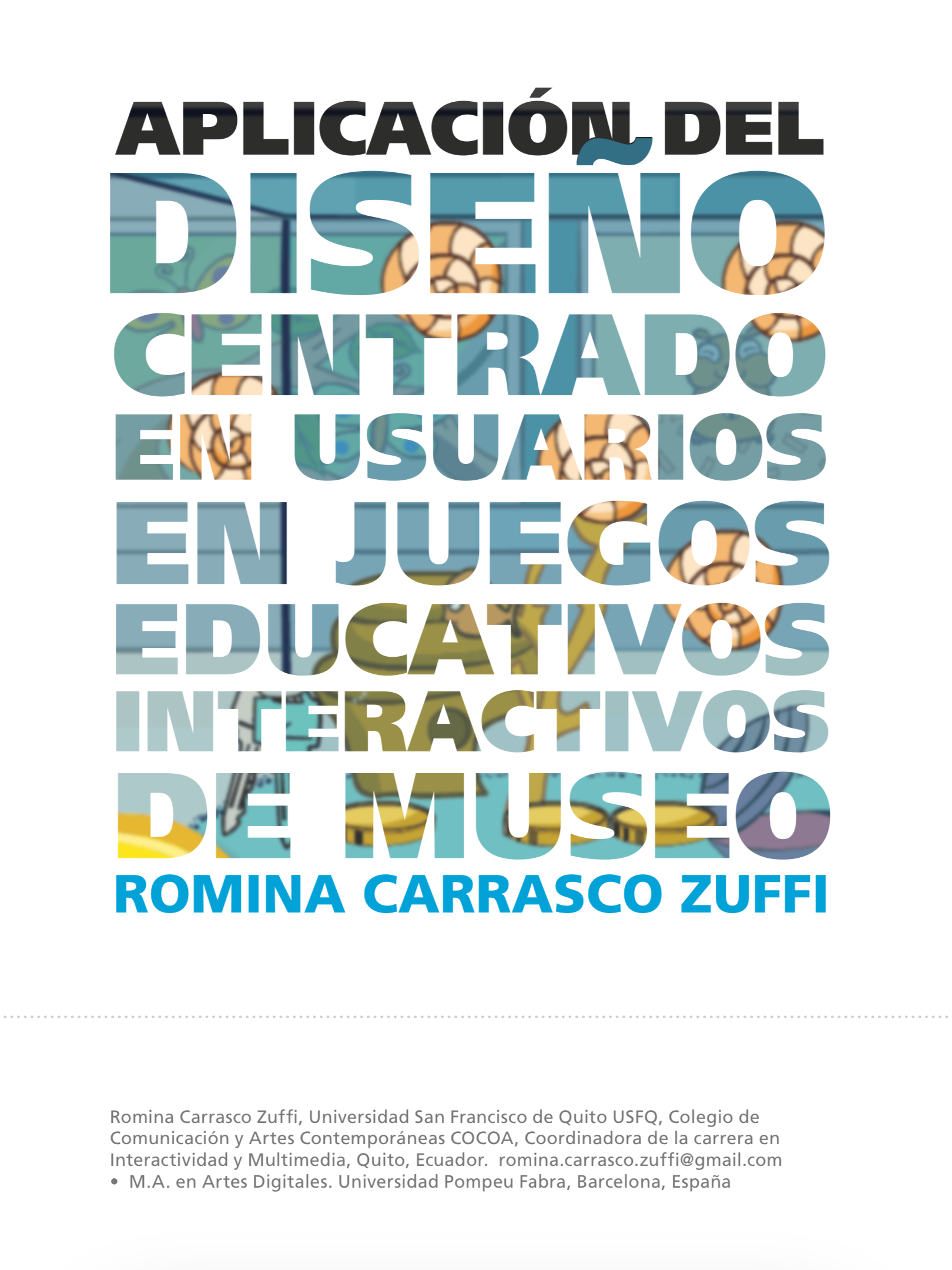
Publicado 2015-08-01
Palabras clave
- museo,
- juegos interactivos,
- educación,
- física,
- multimedia
Cómo citar
Resumen
El estudio examina el desarrollo de una serie de juegos interactivos educativos multimedia creados para enseñar conceptos de física a niños en el Museo Interactivo de Ciencias de Quito. La investigación resalta el uso de una metodología centrada en el usuario (jugador) y en el desarrollo de los juegos. Se destaca el trabajo realizado con modelos mentales, que permitieron alcanzar altos índices de satisfacción y de interpretación por parte del público. Se demuestran los beneficios de generar productos locales, creados desde y para sus propios usuarios, y se dan recomendaciones para futuras investigaciones que otorguen importancia al contexto local.
Descargas
Citas
- Bogost, I. (2007). Persuasive Games: The Expressive Power of Videogames. Boston, MA: MIT Press.
- Bringué, X. y C. Sádaba. (2011). La generación interactiva en Ecuador: niños y adolescentes ante las pantallas. Colección Fundación Telefónica. Quito, Ecuador: Ministerio de Telecomunicaciones y Sociedad de la Información. Disponible en línea en http://es.scribd.com/doc/61621486/La-Generacion-Interactivaen-Ecuador
- Caulton, T. (1998). Hands-On Exhibitions: Managing Interactive Museums and Science Centres. Londres: Routledge.
- Csikszentmihalyi, M. (1991). Flow: The Psychology of Optimal Experience. Nueva York: Fist Harper Perennial.
- Díaz, F. y G. Hernández.(2010). Estrategias docentes para un aprendizaje significativo. Tercera edición. México, D. F.: McGraw-Hill.
- Gammon, B. y Kell, E. (2008). The Impact of Science & Discovery Centrers: A Review of Worldwide studies. Londres: ECSITE UK. Disponible en línea en: http://sciencecentres.org.uk/reports/downloads/impact-of-science-discovery-centres-reviewof-worldwide-studies.pdf Visitado: 10 de julio 2012.
- Gardner, H. (1993). La mente no escolarizada: cómo piensan los niños y cómo deberían enseñar las escuelas. Barcelona: Paidós.
- Garner, B. (2007). Getting to "Got it!": Helping Struggling Students Learn How to Learn. Alexandria, VA: Asociation for Supervision and Curriculum Development.
- Hall T. y Bannon, L. (2006). «Designing ubiquitous computing to enhance children"™s learning in museums». En Journal of Computer Assisted Learning. No. 2: 231-243.
- Hede. T. y Hede, A. (2002). «Multimedia effects on learning: Design implications of an integrated model». En Proceedings Australian Society for Educational Technology Conference 2002, Melbourne. Disponible en línea en: http://www.ascilite.org.au/aset-archives/confs/2002/hede-t.html. Visitado el 25 de octubre de 2013.
- Kolb, D. (1984). Experiental Learning: Experience as a Source of Learning and Development. Londres: Prentice-Hall.
- Malone, T.W. (1981). «Toward a Theory of Intrinsically Motivating Instruction». En Cognitive Science. No. 4: 333-369.
- Montero, F. y López, V, Lozano, M, Fernández, A. y González, P. (2000). Virtual-PRISMAKER: Juegos de ordenador, educación e interfaces. Albacete: Universidad de Castilla-La Mancha. Disponible en línea en: http://www.i3a.uclm.es/louise/nais/investigacion/publicaciones/congresos_ 2000/INTERACCION2000-virtualprismaker.pdf
- Museo Interactivo de Ciencias (MIC). (2010). «Términos de referencia para la contratación de cuatro juegos interactivos educativos multimedia para la exposición "Explora" del Museo Interactivo de Ciencia». Quito.
- Norman, D. (1990). The Design of Everyday Things. Nueva York: Doubleday.
- Papert, S. (2002). Hard Fun. Disponible en línea en: http://www.papert.org/articles/HardFun.html 1980 «From Mindstorms». En N. Wardrip y N. Montfort. The New Media Reader. Londres: MIT Press.
- Piaget, J.(1987). Psicología y Pedagogía. Octava edición. Barcelona: Editorial Ariel.
- Ricci, K.E., Salas, E,, y Cannon-Bowers, J. A. (1996). «Do computer-based games facilitate knowledge acquisition and retention?». En Military Psychology. Vol. 8, No. 4: 295-307.
- Sedighain, K. y Sedighain, A.S. (1996), «Can Educational Computer Games Help Educators Learn About the Psychology of Learning Mathematics in Children?».
- Shneiderman, B., Plaisant, C., Cohen, M., y Jacobs, S. (2010). Designing the User Interface: Strategies for Effective Human-Computer Interaction. Quinta edición. Boston: Addison Wesley, Pearson.
- Shuell, T. (1990). Phases of Meaningful Learning.
- Steen, M. (2011). «Tensions in human-Centred Design». En CoDesign. Vol. 7, No. 1: 45-60.
- Stone, D., Jarret C., Wodroffe, M. y Minocha, S. (2005). User Interface Design and Evaluation. San Francisco: Morgan Kaufmann Publishers.
- Sweller, J. (1994). Cognitive load theory, learning difficulty, and instructional design.
- Tang, S. y Hanneghan, M. (2010). «Designing Educational Games: A Pedagogical Approach». En P. Zemliansky y D. Wilcox. Design and Implementation of Educational Games: Theoretical and Practical Perspectives. Nueva York: Information Science Reference.
- UNESCO. (2004). Las tecnologías de la información y la comunicación en la formación docente. Disponible en línea en: http://unesdoc.unesco.org/images/0012/001295/129533s.pdf
- Uram, C., WILCOX , D. y Thall, J. (2010). «Games and Simulations in Training: Factors to Consider When Designing for Adult Learners». En P. Zemliansky y D. Wilcox. Design and Implementation of Educational Games: Theoretical and Practical Perspectives. New York, Information Science Reference: 1-16.
- Wardrip, N. y Montfort, N. (2003). The New Media Reader. Londres: MIT Press.

